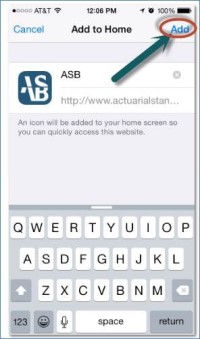As this unusual year draws to a close it’s time to make sure you are on track to meet the continuing education (CE) requirements of the U.S. Qualification Standards (USQS) by the end of the year.
The USQS require actuaries issuing statements of actuarial opinion (SAO) in the United States to earn 30 hours of relevant CE each year. “Relevant” is defined as CE that broadens or deepens your understanding of one or more aspects of your work, expands your knowledge of practice in related disciplines that bear directly on your work, or facilitates your entry into a new area of practice.
Of the 30 hours, 6 must be “organized” and 3 must be “professionalism.” This year, with so many in-person conferences and other meetings canceled or going virtual, some actuaries have expressed concern about being able to meet the requirements for organized activity. The good news is that although organized activities require interaction with actuaries or other professionals from outside your organization, that interaction can take place virtually for purposes of meeting the USQS requirements.
Thus, a webinar or other online CE event where you have the ability to ask questions—even if it is through a web interface—may count as “organized” CE. If you are still short of organized activity hours, the Academy has several more events lined up in December—a professionalism webinar, “Clear as a Bell: Professionalism Aspects of Communication”; two pension webinars, “The Impact of COVID-19 on Retirement Plans,” and “Setting Capital Market Assumptions and the Current Environment”; and the “2020 Seminar on Effective P/C Loss Reserve Opinions.”
Now let’s turn to professionalism CE. Actuarial professionalism is generally concerned with the Code of Professional Conduct, the USQS, the actuarial standards of practice (ASOPs), and ethics. So, for example, reviewing new or revised ASOPs in your area of practice or commenting on ASOP exposure drafts would count as professionalism CE.
Any webinars or other offerings focusing on these topics would also count as professionalism CE, as would time spent serving on a professionalism committees, such as the Actuarial Standards Board or one of its committees and the Actuarial Board for Counseling and Discipline. Academy members may also access the professionalism webinar archive free of charge—a great way to make up a few professionalism CE hours if you find yourself short. (Watching recorded webinars does not count as “organized” activity because it lacks the opportunity to ask questions.)
Speaking of organized and professionalism hours, if you watch a live professionalism webinar worth 1.8 hours, you may count those 1.8 hours toward both the organized and the professionalism requirements, but you may count 1.8 hours only once toward your total of 30.
Those of you planning to issue SAOs for NAIC annual statements next year must complete 15 hours directly relevant to the topics identified in USQS section 3.1.1 for the SAO you intend to issue. At least 6 of those hours must be earned through experiences that involve interactions with outside actuaries or other professionals that is directly relevant to the topics identified in section 3.1.1. These hours may be included in the 30 hours required for all actuaries.
What if you cannot meet the requirements by Dec. 31? If you do not meet the requirements before the end of the year, you may not issue any SAO until you have earned the full 30 hours, including 6 organized and 3 professionalism hours. Say you are 3 hours short on Dec. 31. You may not issue any SAO until you have earned those 3 hours.
Once you have earned those hours, for a total of 30, you are qualified to issue SAOs in 2021, but you will need to earn another 30 hours before the end of 2021 to issue SAOs in 2022. And remember, the USQS defines an SAO very broadly, as “an opinion expressed by an actuary in the course of performing Actuarial Services and intended by that actuary to be relied upon by the person or organization to which the opinion is addressed.” If you are working as an actuary in the U.S., you are almost certainly issuing SAOs.
What if, happily, you have earned more than 30 hours? In this case, the excess may be carried over one year. For example, if you earned 35 hours this year, you could carry 5 hours into 2021 and would need to earn only another 25 hours before the end of the year. You must earn 6 organized and 3 professionalism hours for each year, however.
Finally, be sure to keep good records of your CE. The USQS requires you to keep “appropriate and timely records” for at least six years from the date of the CE. Such records should include, at a minimum, the date of the CE, the credit hours obtained, and a brief description of the subject matter of the CE. Consider using the Academy’s TRACE tool to do this in an efficient and easy way.




